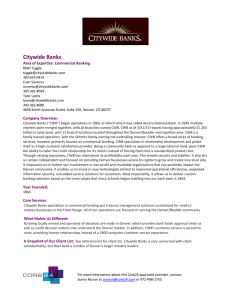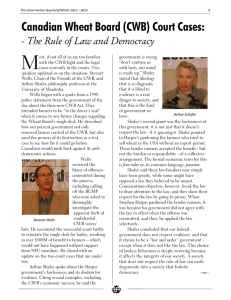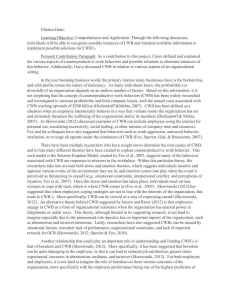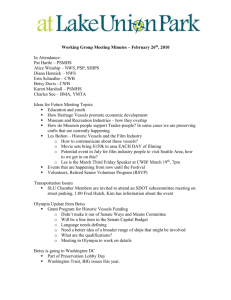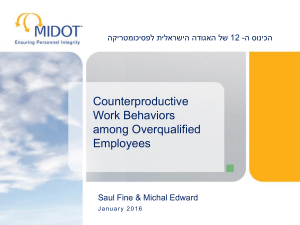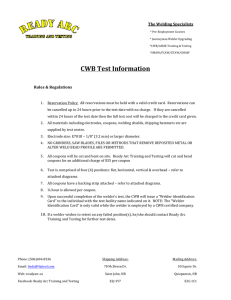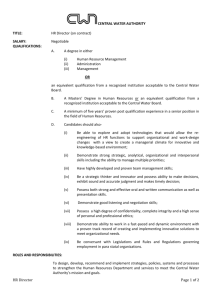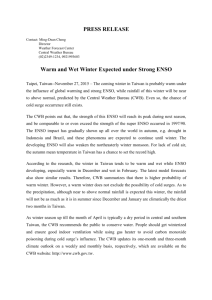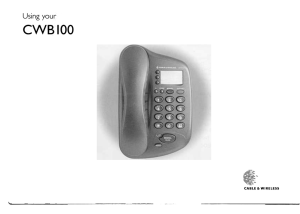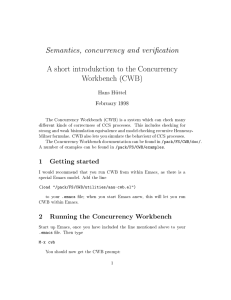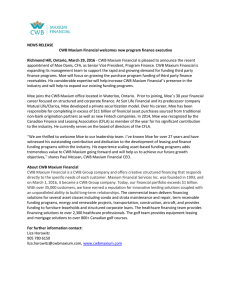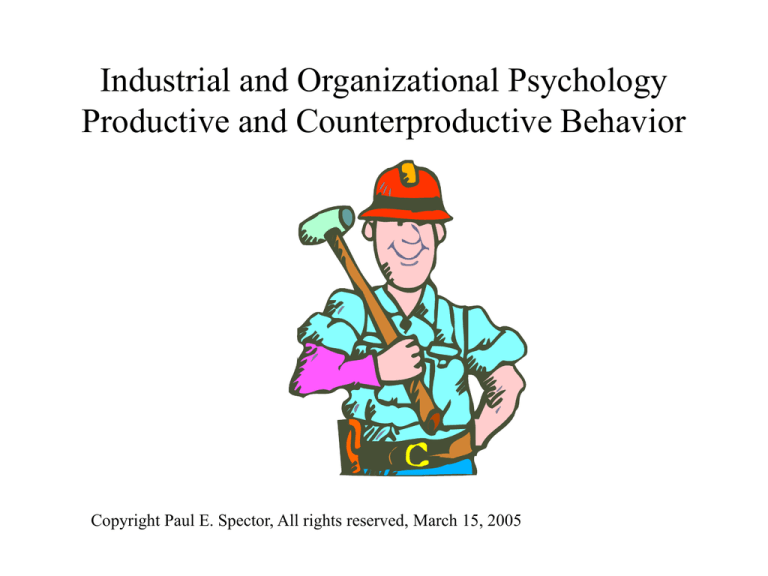
Industrial and Organizational Psychology
Productive and Counterproductive Behavior
Copyright Paul E. Spector, All rights reserved, March 15, 2005
Productive Behavior
• Ability and performance
• Motivation and performance
• Personal characteristics and performance
– Big Five: Small correlations, largest with conscientiousness
– Locus of Control: Opposite results depending on criterion
• Internals better on tasks requiring initiative
• Externals better on routine tasks
– Age and performance: No relation
• Job characteristics: Very small relationship
• Incentive systems: Effective
• Design of technology: Effective
Technology: Human Factors
•
•
•
•
Person-technology interface (tools, machines, computers)
Physical interaction: Movement, manipulation and control
Communication: Exchange of information
Design of tools and equipment for people
– Level of individual tool (screwdriver) vs. system (airplane)
• Human capabilities
– Perceptions (What can people sense and process?)
– Sensory capabilities (thresholds)
•
–
–
–
–
Is it there vs. what is it?
Accuracies of sense modalities
Motions (What can people manipulate and reach?)
Strength
Sizes of objects (chairs, consoles, cockpits)
Technology 2
• Design of controls
–
–
–
–
–
•
Judgments (What judgments can people make?)
–
–
–
–
•
Shape, location, resistance
Recognition (visual, touch)
Standardization (clockwise for left)
Natural motions (overlearning)
Cultural tendencies (Americans pass on right)
What information is necessary for a decision?
Accuracy of decisions
Ways of presenting information
Decision aids
Design of information systems
– Computer hardware
– Computer software
– Telecommunications
Organizational Citizenship Behavior, OCB
• Behavior that goes beyond job requirements
• Another way to contribute to the organization
• Dimensions
– Altruism – helping others
– Compliance – following rules
– Individual vs. Organization beneficiary
• OCB related to job satisfaction
• Found in many diverse countries
– Nigeria and Taiwan
•
Different factors related to different beneficiaries
– Individual: Concern for others and empathy
– Organization: Desire for recognition and equity
• More likely in people who are collectivistic, e.g., Chinese
Counterproductive Work Behavior, CWB:
Withdrawal
• Absence
– Absence culture
– Absence policies
• Lateness
– Job dissatisfaction
– Long commutes
– Work-family conflict, e.g., having young children
• Turnover
– Job dissatisfaction
– Availability of alternative employment
Model of Turnover
Counterproductive Work Behavior:
Aggression, Mistreatment, Sabotage & Theft
• Intentional behavior that harms the organization or
organization members
–
–
–
–
Aggression (physical and verbal)
Sabotage
Theft
Withdrawal
• Directed at organization vs. people
–
–
–
–
Coworkers
Subordinates
Supervisors
Clients/Customers
Impact of CWB
• Extreme forms of direct violence are rare
– 1993 American B.L.S.: 1,063 workplace homicides, 59 by employees
• Employee theft accounts for more loss than shoplifting
• Employee theft estimated at $200 billion/year
– Hollinger (1986) stealing varied with industry
• 6.6% retail (merchandise)
• 27.3% hospital (supplies like linens)
• 14.3% manufacturing (raw materials)
• Geddes (1994) manager national survey, response by employees
• to negative feedback.
– Pushed or shoved 3%, damaged my property 4%
– Refused to perform assignment 19%, Absence 18%
Causes of CWB
• Person
– Certain types of people more likely to engage in these behaviors.
– Delinquent personality:
•
•
•
•
Alienated
Hostility to rules
Poor impulse control
Social insensitivity
– Integrity tests used to screen them.
• Situation
–
–
–
–
–
Situations that are stressful
Situations that induce negative emotions such as anger
Situations that allow for little employee control
Culture that encourages CWB
Injustice: CWB to even the score
Model of CWB
Mistreatment
• Form of psychological aggression aimed at an individual
• Can involve single individual (bullying) or group (mobbing)
• Causes
– General anxiety disorder in victim
– Poor leadership and problems in the workplace
– Bullies—individuals who like to mistreat
•
Effects
– Anxiety & Depression
– Physical symptoms
– Posttraumatic stress disorder
• Examples of Mistreatment
–
–
–
–
–
–
Ignoring the person
Insulting a person
Spreading false rumors
Not allowing the person to speak
Physical threats
Sexual harassment

